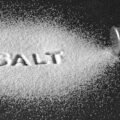Migraines and Electrolytes
In late June of 2015, I received a PM (personal message) on Facebook from a husband of a migraineur. The husband introduced himself and explained that his wife “suffered with migraines for 15 years (Oct. 2000) after hitting her head under a bathroom cabinet.” She had been through all kinds of typical migraine treatments – just about everything under the sun possible to try, including a neuronal stimulator placed in via surgery – but nothing has worked. As he was sitting in the hospital waiting for some results, he found me on Facebook and asked for help.
I have a standard questionnaire that I ask all migraineurs to fill and send the answers to me via PM so I can see what may be wrong. The first thing that hit me was that she was drinking 256 oz (32 glasses) water a day when the calculator suggested that her petite figure needed only 66 oz (just over 8 glasses) so something was terribly wrong. She also took a ton of medications, though the list he sent was already greatly reduced. Even with these medications, she suffered debilitating migraines every day.
The migraineur was Kristen Cassimatis. Her recovery was covered recently by a local television station on their news. You can watch it here: Raw milk helping woman relieve migraine pain.
What Do Electrolytes, Whole Milk, and Migraines Have in Common?
A lot actually. The very first article I published at Hormones Matter was on the importance of proper hydration to the body. Hydration is not water but a mix of electrolyte minerals with water, of which sodium and potassium (in proper balance) are the most important. An article I wrote somewhat later describes what excessive thirst means for the body and that sugar is really bad for you. Thus, if you look through some of the articles I published, you can see that a meal that is hydrating, contains no added sugar, has protein and some minimal carbs, electrolytes, and fat. Fat is good for you. I have also published several academic journal articles on the cause and treatment of migraine, based on statistical findings in the migraine group on Facebook.
I have not yet discussed fat and cholesterol in great detail but an article shall come about that in the near future. For now, since whole milk is full of saturated fat and cholesterol, I just want to mention a few important findings. It is important to note that over 70% of our brain is fat and 25% of all cholesterol in our body is found in our brain (1) in what is called the white matter where voltage transmitting axons are coated with cholesterol (myelinated). Thus, cholesterol and fat are important for us.
While there is a huge controversy over the benefit versus harm of saturated fats and cholesterol, more studies now show that saturated fats and higher levels of cholesterol are actually better for us, particularly for women. In fact, saturated fat is not associated with heart disease as suggested by many studies.
To add insult to injury, cholesterol is not actually made from fat but from acetoacetyl-CoA (2) by a 19-step process in the liver. We can choose to eat cholesterol but if we don’t eat enough, the liver has to make cholesterol. When we don’t eat cholesterol, the liver makes less cholesterol than each person’s optimal level (2). The only bad cholesterol our liver makes are triglycerides that do clog up arteries but they are made of sugar and under special circumstances. Thus, regardless in what stage studies are at now, something that every single cell is made of in our body – the membrane of each human cell is made of lipid bilayer – cannot possibly be bad for us: we are made of the stuff.
As in the story above, someone who feels the urge to drink a lot of water is usually not getting enough or the right balance of electrolytes. Moreover, the act of drinking too much water is harmful since it dilutes electrolytes. Drinking whole milk, which is full of electrolytes, on the other hand, is good for us migraineurs and others alike. Few people realize that milk is a great source of electrolytes, protein, and good cholesterol. Most of us were told from early on in our lives that milk is for cows and not people; milk is bad for us; it has puss in it; it causes puss; it makes one phlegm up; it makes us fat; it has too much fat; etc. We have been told not to drink milk, and as a result, many folks are having difficulty managing electrolyte and cholesterol balance.
I think that milk is a perfect food, assuming of course, that it is organic, whole milk, not treated with hormones and antibiotics, as in the story above. Raw milk is not legal everywhere so while drinking safe raw milk is healthier, it may not be available to everyone. Reduced fat milk does not have the benefits of whole milk and also contains added sugar and proteins that are not all that great for you. In fact, if you have no time to eat a meal, be it breakfast, lunch, or dinner, a glass of whole milk is an ideal replacement.
So, as Kristin recovered from her migraines and is also preparing to have her brain stimulator surgically removed, she joined the thousands of migraineurs who have joined our migraine community on Facebook. Enjoy Kristen’s story and join the several thousands who have been able to stop all their medicines and remained migraine free.
Sources
- Perlmutter D & Loberg K (2014) Grain Brain: The Surprising Truth About Wheat, Carbs, and Sugar – Your Brain’s Silent Killers (Hodder & Stoughton).
- Dr. Kendrick M (2007) The Great Cholesterol Con; The truth about what really causes heart disease and how to avoid it (John Blake Publishing, London, England) p 270.












